
1.5 tons
- Flatbed canvas-top, long base;
- Rear loading, side curtain, top-sliding roof.
Dimensions:
- Length: 4.3 m (there are extended versions up to 4.5 m);
- Width: 2.1 m;
- Height: 2.2 m.
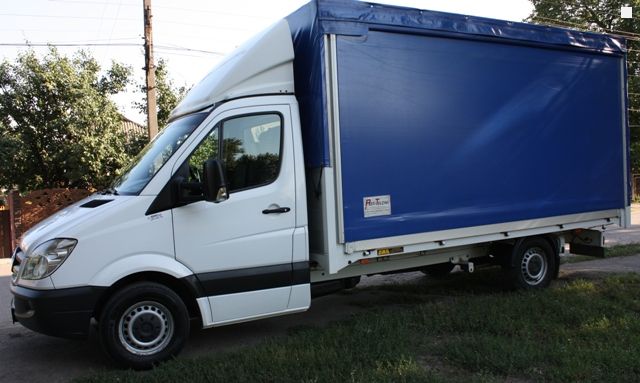
Gazelle

The cargo compartment of the vehicle is canvas-top, and the canvas is removable. The vehicle can be equipped with straps for fastening and additional equipment.
The consumer properties (tonnage, volume, overall dimensions) of the Gazelle vehicles are middle-class. Cargo compartments of these vehicles may differ slightly in terms of the overall dimensions and, accordingly, volumes.
Approximate characteristics of the cargo compartment of the Gazelle class vehicles:
- Length: 2.8-3.2 m (there are elongated versions up to 4.5 m);
- Width: 1.8-1.9 m;
- Height: 1.7-2 m;
- Volume: 9-11 m3;
- Carrying capacity: 1.5-1.7 tons.
Vehicles of this class are used extensively on intracity and intercity routes of short and medium distance (500-700 km). Their specifications allow for an average speed up to 100 km/h, and the cabin layout provides space for one or two passengers (forwarders).
The canvas-top version of the cargo compartment allows removing the canvas and getting an open cargo compartment. The vehicle can be equipped with straps and other additional fixtures (elevator, rigid sides).
1.5-2 tons. Minibus
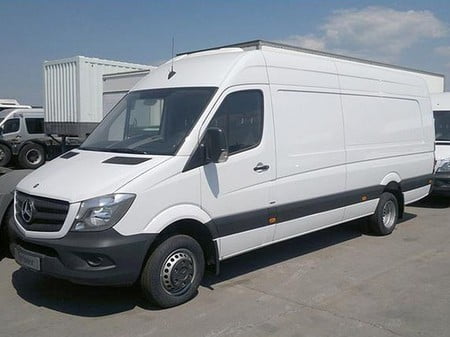
Various models of domestic and imported trucks can be attributed to the “Minibus” class according to their main consumer qualities (tonnage, volume, overall dimensions). Cargo compartments of these vehicles may differ slightly in terms of overall dimensions and, accordingly, volumes.
Approximate characteristics of the cargo compartment of the minibus class vehicles:
- Length: 2.8-4 m (there are elongated versions up to 4.5 m);
- Width: 1.42-1.87 m;
- Height: 1.7-2.2 m;
- Volume: 9-17 m3;
- Carrying capacity: 1.5-2 t.
Vehicles of this class are widely used on intracity and intercity routes of short and medium distance (500-700 km). Technical characteristics ensure a fairly high average speed (up to 120 km/h), and the cabin layout provides space for one or two passengers (forwarders).


Carrying capacity: 3.5-7 tons.
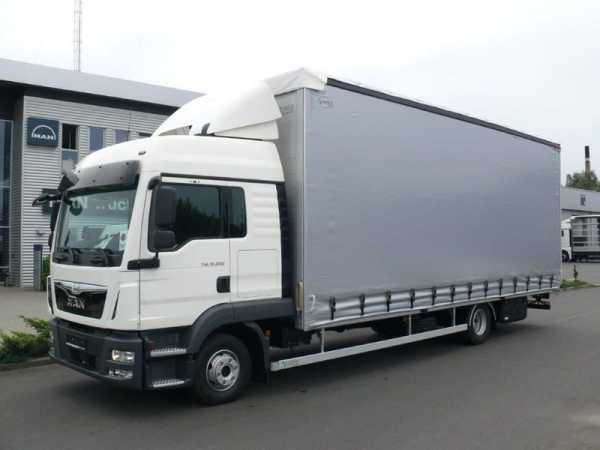
Various models of domestic and imported trucks can be attributed to the 3.5-7 ton class according to their main consumer qualities (tonnage, volume, overall dimensions). Cargo compartments of these vehicles may differ slightly in terms of overall dimensions and, accordingly, volumes. There are both canvas-top and all-metal body options. For canvas-top cars, top, side, and rear loading is possible.
Approximate characteristics of the cargo compartment of vehicles of the 3.5-7-ton class:
- Length: 3.5-7 m;
- Width: 2-2.4 m;
- Height: 2.45-2.70 m;
- Volume: 15-40 m3;
- Carrying capacity: 3.5-7.5 tons.

This class of vehicles is used extensively on intracity and intercity routes (500-700 km). They are often used for transportation of personal belongings and moving.
10 tons, canvas-top
This class can be divided into several subclasses:
- Cars with a carrying capacity of up to 5 tons with a body volume close to the volume of a 10 ton car (36 m3).
- Vehicles with a capacity of up to 10 tons with a body volume of up to 56 m3.
- Vehicles with a carrying capacity of up to 15 tons with a large (50-60 m3) and long body (up to 8 m).
Approximate characteristics of the cargo compartment of the vehicle with a carrying capacity of 10-15 tons*:
- Length: 5,0-8,0 m;
- Width: 2,4-2,5 м;
- Height: 1,8-3,0 м;
- Volume: 25-60 m3;
- Carrying capacity: 5-15 tons.
*A significant variation in parameters is explained by a large number of cargo compartment options.
Trucks of this class are widely used in intercity and international directions. Usually the cabin is equipped with a sleeping place and provides a place for the forwarder. As standard, the truck is equipped with lashing straps (up to 6 pieces). The cargo compartment is adapted to different loading/unloading options (top, side). Imported truck models can be equipped with air suspension, which significantly improves the smoothness of the ride and provides better cargo safety. The trucks can be equipped with an elevator.
10 tons, thermal

The class of 10-ton vehicles with an isothermal body includes various vehicles of domestic and imported production.
This class can be divided into several subclasses:
- Cars with a carrying capacity of up to 5 tons with a body volume close to the volume of a 10 ton car (36 m3);
- Vehicles with a load capacity of up to 10 tons with a body volume of up to 56 m3;
- Vehicles with a carrying capacity of up to 15 tons with a voluminous (50-60 m3) and long body (up to 8 m).
Approximate characteristics of the cargo compartment of the vehicle with a carrying capacity of 10-15 tons*:
- Length: 5.0-8.0 m;
- Width: 2.4-2.5 m;
- Height: 1.8-3.0 m;
- Volume: 25-60 m3;
- Carrying capacity: 5-15 tons.
*A significant variation in the parameters is explained by a large number of options for cargo compartments.
A distinctive feature of the cargo compartment of the “thermal van” type is the ability to maintain the temperature at which the loading took place for a long time (10-20 hours), while the temperature outside is -10 C to +20 C. Further to that, some models have the ability to heat the cargo compartment, which allows maintaining a high internal temperature for a longer time at low external temperatures. The sides of the cargo compartment are made of foam lined with tin. The cargo compartment door is equipped with a seal. There are ventilation holes. The cargo compartment is usually equipped with additional side doors to facilitate loading/unloading.
Imported truck models can be equipped with air suspension, which provides a smooth ride and increases the safety of the cargo. The trucks can be equipped with an elevator.
10 tons with a 20-foot container
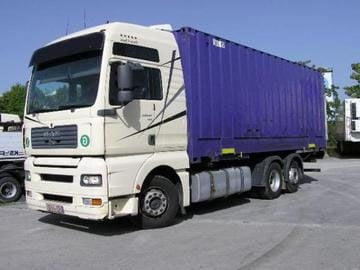
A car with a 20-foot sea container is close to a 10-ton car with a canvas-top or isothermal body in terms of consumer qualities.

There are different types of 20-foot sea containers. The most commonly used types are:
- A regular 20-foot container;
- A 20-foot thermal container (similar to an isothermal van);
- A 20-foot refrigerated container (isothermal van with built-in refrigeration unit);
- A 20-foot container with a canvas top;
- A 20-foot platform with mounting racks.
All types of sea containers are usually used for the transportation of goods in mixed traffic (using different modes of transport). All containers have unified external dimensions.
There is a category of vehicles with containers of various types mounted on the frame platform for permanent use of road transport.
Overall dimensions of a 20-foot container:
- Length: 6.0 m;
- Width: 2.4 m;
- Height: 2.4 m;
- Volume: 34 m3;
- Carrying capacity: 10-20 tons (limited by vehicle carrying capacity).
20 tons with a 40-foot container
In terms of consumer qualities, a car with a 40-foot sea container is close to a 20-ton car with a canvas-top or isothermal body (Eurotent).

There are different types of 40-foot sea containers. The most commonly used types are:
- A regular 40-foot container;
- A 40-foot thermal container (similar to an isothermal van);
- A 40-foot refrigerated container (isothermal van with built-in refrigeration unit);
- A 40-foot container with a canvas top;
- A 40-foot container with mounting racks.
All types of sea containers are usually used for the transportation of goods in multimodal traffic (using different modes of transport). All containers have unified external dimensions.
In Russia, there is a category of vehicles with containers of various types mounted on a frame platform for permanent use in road transport.
Overall dimensions of a 40-foot container:
- Length: 12.0 m;
- Width: 2.4 m;
- Height: 2.4 m;
- Volume: 68 m3;
- Carrying capacity: 20-28 tons.
20 tons with isothermal semi-trailer
Isothermal semitrailer with a volume of 82 m3 has consumer properties similar to those of smaller isothermal vans. The following dimensions can be considered as reference for this type of semitrailer:

Overall dimensions of the isothermal semi-trailer with a volume of 82 m3:
- Length: 13.6 m;
- Width: 2.45 m;
- Height: 2.45 m;
- Volume: 82 m3;
- Carrying capacity: 20-25 tons.
There are a large number of semitrailer modifications, the most common of which are semitrailers with a volume of 76-78 m3 and a shorter length (12.5-13 m) and semitrailers with standard or greater length, width and height (13.6 m, 25 m, 27 m).
The key consumer characteristic of this semi-trailer is the volume or number of pallets that can be loaded.
Suspension of semitrailers is made in a spring or pneumatic version. Pneumatic suspension guarantees smooth running of the road train, which ensures the safety of fragile cargo.
A distinctive feature of the cargo compartment of the “Thermocar” type is the ability to maintain the temperature at which the loading was carried out for a long time (10-20 hours), while the outside temperature is -10 C to +20 C. Further to that, some models allow heating the cargo compartment, which allows maintaining the interior temperature for a longer time at lower external temperatures. The sides of the cargo compartment are made of foam lined with tin. The cargo compartment door is equipped with a seal. There are ventilation holes. As a rule, the cargo compartment is equipped with additional side doors to facilitate loading/unloading.
20 ton refrigerator
Refrigerated semitrailer is a cargo semitrailer, the temperature in which can vary from -7 – -12 C to 0–10 C, regardless of the outside temperature. This ability of the cargo compartment is ensured by an autonomous refrigeration unit. Modern refrigeration units have different levels of protection against emergency temperature changes, which ensures the safety of the cargo. The units may have the ability to record the temperature regime on specialized “dummies”. The main field of application of these semi-trailers is transportation of perishable products or goods requiring special temperature conditions.
Overall dimensions of the refrigerated semi-trailer with a volume of 82 m3:
- Length: 13.6 m;
- Width: 2.45 m;
- Height: 2.45 m;
- Volume: 82 m3;
- Carrying capacity: 20-25 tons.
There are a lot of semitrailer modifications, the most common of which are semitrailers with a volume of 76-78 m3 and a shorter length (12.5-13 m) and semitrailers with conventional or greater length, width and height (13.6 m, 25 m, 27 m).
The key consumer characteristic of this semi-trailer is the volume or number of pallets that can be loaded.
Suspension of semitrailers is made in a spring or pneumatic version. Pneumatic suspension guarantees a smooth ride of the road train, which ensures the safety of the load, which is easily broken.
Euro canvas
Euro canvas is a conventional concept denoting a truck with a semi-trailer, which has dimensions close to the specified characteristics. The euro truck, which is also called euro canvas, can accommodate 2 euro pallets 120 cm long each placed across the width.
Overall dimensions of Euro canvas:
- Length: 13.6 m;
- Width: 2.45 m;
- Height: 2.45 m;
- Volume: 82 m3;
- Carrying capacity: 20-22 tons.
There are a lot of semitrailer modifications, the most common of which are semitrailers with a volume of 76-78 m3 and a shorter length (12.5-13 m) and semi-trailers with conventional or large length, width and height (13.6-15 m; 2.5 m; 2.7 m).
The design of the semi-trailer allows removing the canopy and thus allows loading/unloading the cargo from the sides or from the top. Further to that, the semitrailer without a canvas allows using the semitrailer as an open platform with a side height of 35 to 50 cm.
Semi-trailers are produced in many modifications, which include semi-trailers with a volume of 76 to 78 cubic meters, but with a small length, 12.5-13 m, and semi-trailers with conventional or large length, width and height. For example, the length of the semi-trailer is 13.6-15 m, width – 2.5 m, and height – 2.7 m. The design of the semitrailer allows removing the canvas, which allows loading/unloading the cargo from the sides or from the top. Further to that, the semitrailer without a canvas allows using the semitrailer as an open platform with a side height of 35 to 50 cm.
Classification of freight transport by the number of axles:
- Biaxial;
- Triaxial;
- Four-axled;
- Five-axled etc.
Classification of freight transport by axle loads (on the most loaded axle):
- max 6 tons;
- 6 to 10 tons.
Classification of freight transport by wheel formula:
- 4X2 is a biaxial vehicle with one driving axle;
- 4X4 is a biaxial vehicle with both driving axles;
- 6X6 is a triaxial vehicle with all driving axles;
- 6X4 is a triaxial vehicle with two driving axles.
Classification of freight transport by volume
A canvas-top car, 55 cubic meters

DIMENSIONS length width height
internal 9.84 m 2.42 m 2.32 m
WEIGHT carrying capacity: 14-18 t
VOLUME (cargo capacity): 55 cubic meters
A canvas-top car, 68 cubic meters

DIMENSIONS length width height
inner 12.26 m 2.42 m 2.32 m
outer 12.5 m 2.55 m 4 m
WEIGHT 7.5 t
carrying capacity 20-24 t
VOLUME (cargo capacity) 68 cubic meters
A canvas-top car, 82 cubic meters
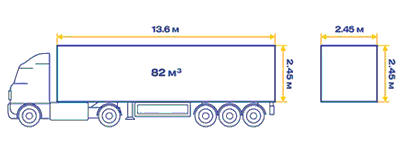
DIMENSIONS length width height
internal 13.6 m 2.45 m 2.45 m
WEIGHT carrying capacity: 20-24 t
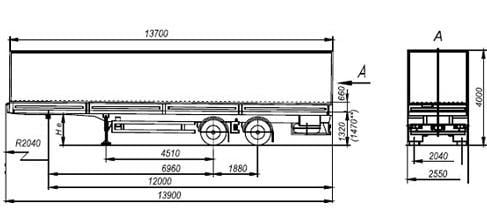
A canvas-top car, 85 cubic meters
DIMENSIONS length width height
inner 13.62 m 2.48 m 2.52 m
outer 13.7 m 2.55 m 4.0 m
WEIGHT carrying capacity: 20-24 t
VOLUME (cargo capacity) 85 cubic meters
A canvas-top car, 90 cubic meters

DIMENSIONS length width height
inside 13.6 m 2.45 m 2.60 m
WEIGHT carrying capacity: 20-24 t
VOLUME (cargo capacity): 90 cubic meters
JUMBO
A canvas-top semi-trailer with a large capacity. This is achieved due to a special “L”-shaped floor and reduced diameter of the semitrailer wheels.
- Carrying capacity: up to 24 tons;
- Useful volume: 96 cubic meters.
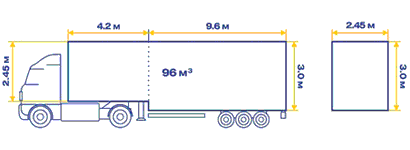
DIMENSIONS length width height
internal 13.8 m 2.45 m 2.45-3.0 m
WEIGHT carrying capacity: 20-24 t
VOLUME (cargo capacity): 96 cubic meters
110, 120, coupling – these are the names of trucks that allow you to transport the maximum volume (110, 120 cubic meters) of cargo on public roads without special permits. This road train (coupling), unlike the Euro truck, consists of a car and a trailer of the same or different volume and carrying capacity, depending on the design features of a particular vehicle. At the same time, the total parameters remain 120/110 cubic meters/20 tons.

A canvas-top car, 110 cubic meters
DIMENSIONS length width height
internal, truck 7.1 m 2.45 m 2.95 m
internal, trailer 8.0 m 2.45 m 3.0 m
WEIGHT carrying capacity: 10-21 t
VOLUME (cargo capacity) 110 cubic meters

A canvas-top car, 120 cubic meters
DIMENSIONS length width height
internal, truck 8.0 m 2.45 m 2.95 m
internal, trailer 8.0 m 2.45 m 3.0 m
WEIGHT carrying capacity: 10-21 t
VOLUME (cargo capacity) 120 cubic meters
Classification of freight transport by the number of axles:
- Biaxial;
- Triaxial;
- Four-axled;
- Five-axled etc.
Flatbed semitrailers
Biaxial flatbed semitrailer 9334-0000020-10


Biaxial flatbed semitrailer 9334-24-10


Triaxial flatbed semitrailer with sliding skids
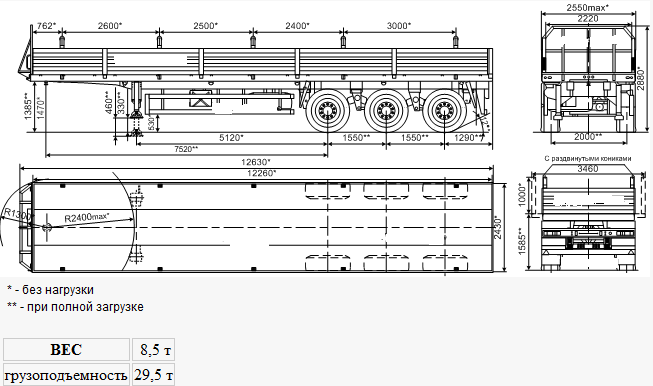
Standart

Mega

Road train
Van



Classification of freight transport by groups:
Group I: flatbed vehicles
(general purpose vans)
Group II: specialized
(dump trucks, vans, refrigerators, container trucks, truck tractors with semi-trailers, ballast tractors with trailers)
Group III (conditionally): tank trucks
Classification of freight transport by composition:
- Single vehicle;
- Road train;
- Trailer;
- Semi-trailer.
Classification of freight transport by engine type:
- Gasoline;
- Diesel.
Classification of freight transport by carrying capacity:
- Small;
- Medium;
- Large;
- 1.5 to 16 tons;
- More than 16 tons.
Flatbed canvas-top semitrailer (canvas-top semitrailer)
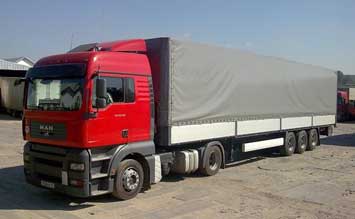
The most common type of truck. It is suitable for transportation of most types of cargo. Removable canvas od the semi-trailer allows loading cargo from the top, side and rear.
- Carrying capacity: 20 to 25 tons;
- Useful volume: 60 to 92 cubic meters.
Most of the goods are designed for delivery in batches for the Euro standard car: 20 tons, 82 cubic meters, 32 euro pallets per canvas-top car.
Canvas-top semitrailer of jumbo type

This is a canvas-top semi-trailer with a larger capacity. This is achieved due to the special “L”-shaped floor and reduced diameter of the semitrailer wheels.
- Carrying capacity: up to 20-24 tons;
- Useful volume: 96 cubic meters;
- Capacity: 33 euro pallets;
- Canvas-top car with a coupling.
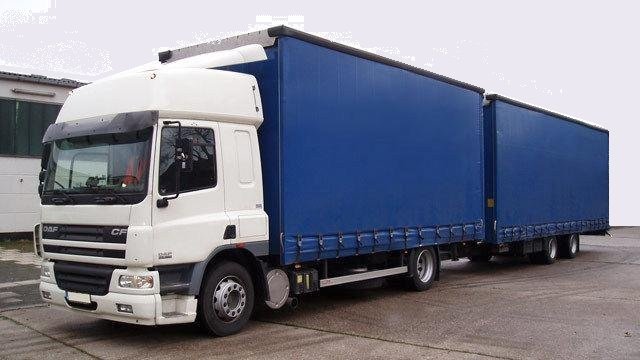
It is a canvas-top car + canvas-top trailer.
The main advantage is a large useful volume. The disadvantage is that it is not suitable for transportation of long cargo.
- The carrying capacity is usually 16 to 20 tons;
- Useful volume: 100 to 120 cubic meters;
- Capacity: up to 33-36 euro pallets.
Refrigerator
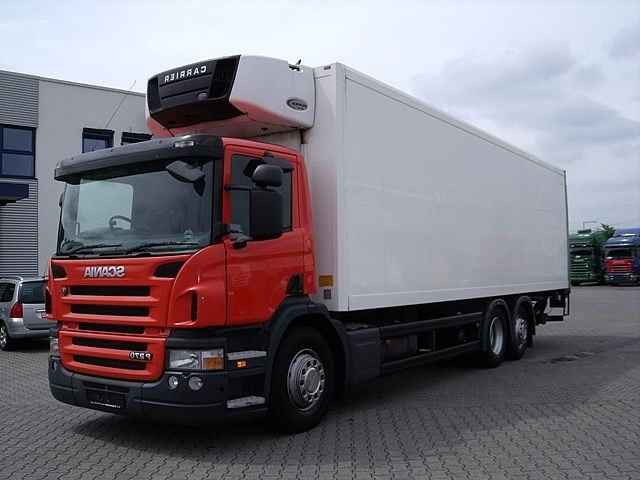
Refrigerated semi-trailer. It is commonly used for transportation of food and goods that require compliance with the temperature regime during transportation. Usually, refrigerators can maintain the set temperature from +12 °C to – 20 °C.
- The carrying capacity is 12 to 22 tons;
- Useful volume: 60 to 92 m3;
- Operation of refrigerators costs 10-30% higher than those of conventional types of cars, which is due to the continuous refrigerator operation.
Isotherm
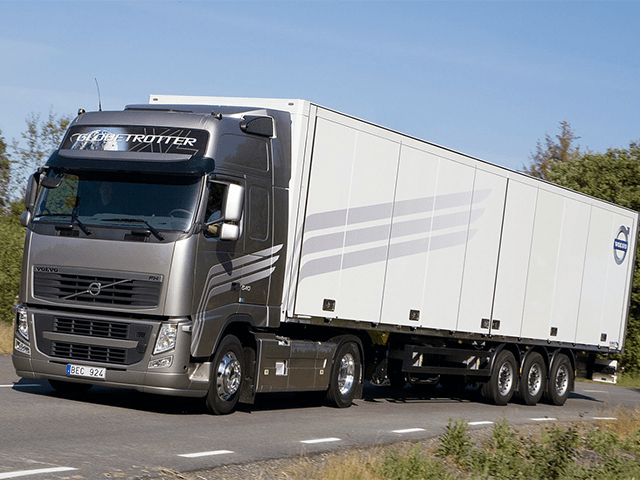
There is a semi-trailer, auto coupling and single. As a rule, it is used for transportation of food. It can keep a certain temperature for a long time, but does not have its own refrigeration unit.
- Carrying capacity: 3 to 25 tons;
- Useful volume: 32 to 92 m3.
Timber truck
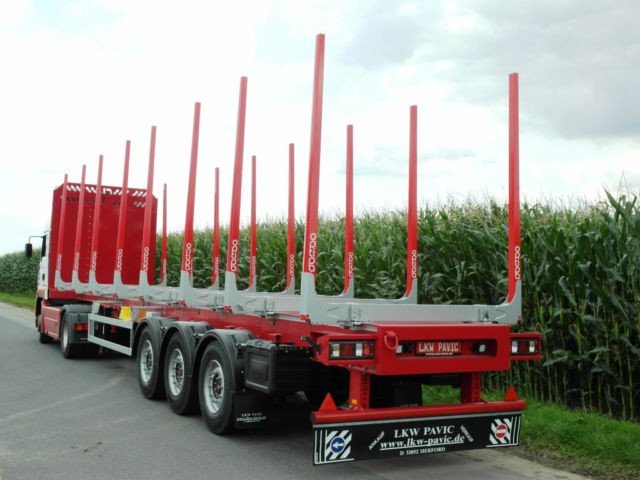
It is used for the transportation of goods resistant to external influences, mainly timber.
- Carrying capacity: 3 to 25 tons.
Open platform – Container truck

It is used for the transportation of goods resistant to external influences, such as containers, concrete blocks, overlapping, building structures, etc. It can be used for transportation of oversized cargo.
- Carrying capacity: 15-25 tons.
Platform for transportation of oversized cargo

It is used for the transportation of oversized cargo by road. The carrying capacity of such platforms can reach 83 tons. A special design of the platforms allows transporting high cargoes, and the so-called telescopic platforms allow unfolding the trailer up to 29 meters long, and thus carrying long goods.
Car carrier

It is designed for the transportation of passenger cars. It is a two-level platform on which cars are placed.
- Carrying capacity: up to 15 tons.
The capacity depends directly on the length of the trailer and the transported cars. The car carrier accommodates 8-10 cars on average.
Tanker truck

It is used for the transportation of edible and non-edible liquid products.
- Carrying capacity: 12-24 tons;
- Useful volume: 6-40 m3.
 EN
EN
